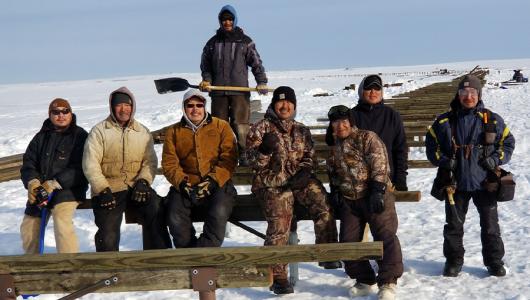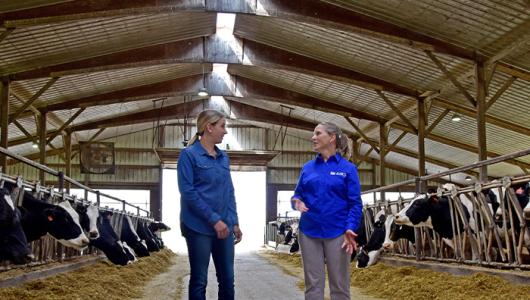Brendon and Sheldon Rockey of Center, Colorado, grow and market specialty potatoes and specialty seed potatoes. They are regenerating the soil ecosystem while using fewer chemical and synthetic fertilizer inputs.
How do they do this in an apparent monoculture? Brendon Rockey says, “Without diversity, I wouldn’t be able to do it.”
They learned that they could reduce production costs while maintaining yield and increasing quality by:
- Steadily increasing biological diversity through different strategies like
- Diverse cover cropping
- Minimizing soil disturbance
- Integrating livestock
- Implementing other soil health practices like
- Cutting their inputs
- Using a probiotic approach
- Managing pests without pesticides
Check out the video playlist on YouTube or below to learn more about how these soil health practices and others came to their rescue!
How to Progressively Increase Diversity
Filmed in the summer of 2019
Here, Brendon walks us through his journey of adding diversity to his cropping system over the last decade. He began with the insertion of diversified cover crops into his crop rotation, advanced to growing in-row cover crops with his potatoes (a unique feature of this operation), and lately incorporated livestock into his system.
How to Cut Inputs and Increase Quality
Filmed in the summer of 2019
Brendon discusses how he’s maintained yields and increased quality while reducing the input costs of his potato crop. He did it by substituting compost for synthetic fertilizer in combination with diverse full season cover crops. He’s even been able to drastically reduce the amount of compost he needs in the system. While yields have not changed, crop quality has increased and input costs have decreased, giving Brendon a better return on his crops.
How to Use a Probiotic Approach to Farming
Filmed in the summer of 2019
Brendon explains what he means by using the “probiotic approach” to farming. Their operation nurtures life, in contrast to agriculture that kills pests and beneficial insects. Find out how this approach has worked for the Rockey Farm.
How to Manage Aphids without Pesticides
Filmed in the summer of 2019
Brendon doesn’t use insecticides, but that doesn’t mean that he is not controlling his aphid population. Brendon prefers to use plant diversity, like cover crops and companion crops, and insects to do the controlling for him. The Rockey Farm strategy of using diversity to control aphids is a great example of the probiotic approach.
How to Integrate Livestock without Owning Cattle
Filmed in the summer of 2019
Rockey Farms is in the potato business, not the livestock business, but Brandon was able to work with ranchers and use their cattle on his land in a way that served everyone’s needs and met their goals. Find out how Brendon uses livestock to incorporate his cover crop into his soil while increasing nutrient cycling and supplementing his cover crop seed costs.
How to Promote Soil Health in Harsh Conditions
Filmed in the summer of 2019
The low rainfall and high altitude in Center, Colorado, where Rockey Farms is located create dry conditions and short growing seasons. See how the Rockeys overcame these obstacles and were still able to plant cover crops, which improved the water use efficiency of their cropping system.
How to Increase Carbon Cycling
Filmed in the summer of 2019
“Plants need carbon, just like we do, but the form is different.” Brendon Rockey spends much of his life explaining the vital role of carbon in the life of soils and plants in a way any farmer can understand. In this video, Brendon talks about the role of carbon cycling in plants and the soil, and why this is important to farmers.


